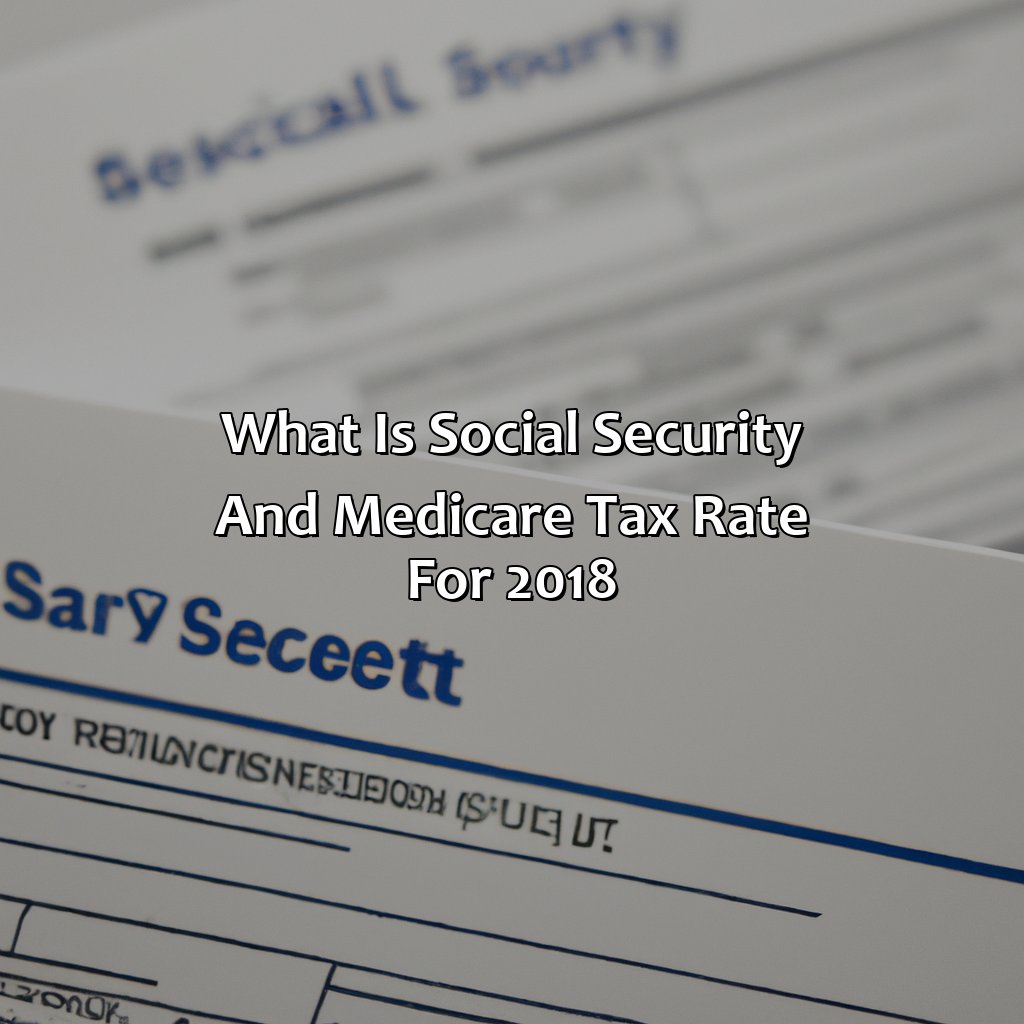What Is Social Security And Medicare Tax Rate For 2018?
Key Takeaway:
- Social Security tax rate for 2018 is 6.2% for employees and 12.4% for self-employed individuals. This tax funds Social Security benefits for retirees, disabled individuals, and families of deceased workers.
- Medicare tax rate for 2018 is 1.45% for employees and 2.9% for self-employed individuals. This tax funds healthcare benefits for seniors and disabled individuals.
- Employers and employees must accurately calculate and submit Social Security and Medicare taxes on time to avoid penalties. Employers are responsible for withholding these taxes from employee paychecks and submitting them to the government on a regular basis.
Do you struggle to make sense of Social Security and Medicare Tax Rates? Find out how much you’ll owe in 2018 and stay informed with this helpful guide.
Social Security Tax Rate for 2018
To grasp Social Security Tax, you must take a closer peek. Its sub-sections, such as “Understanding Social Security Tax,” “Social Security Tax Calculation,” and “Changes in Social Security Tax Rate for 2018,” will give you a clear idea of the tax rates for 2018 taxpayers.
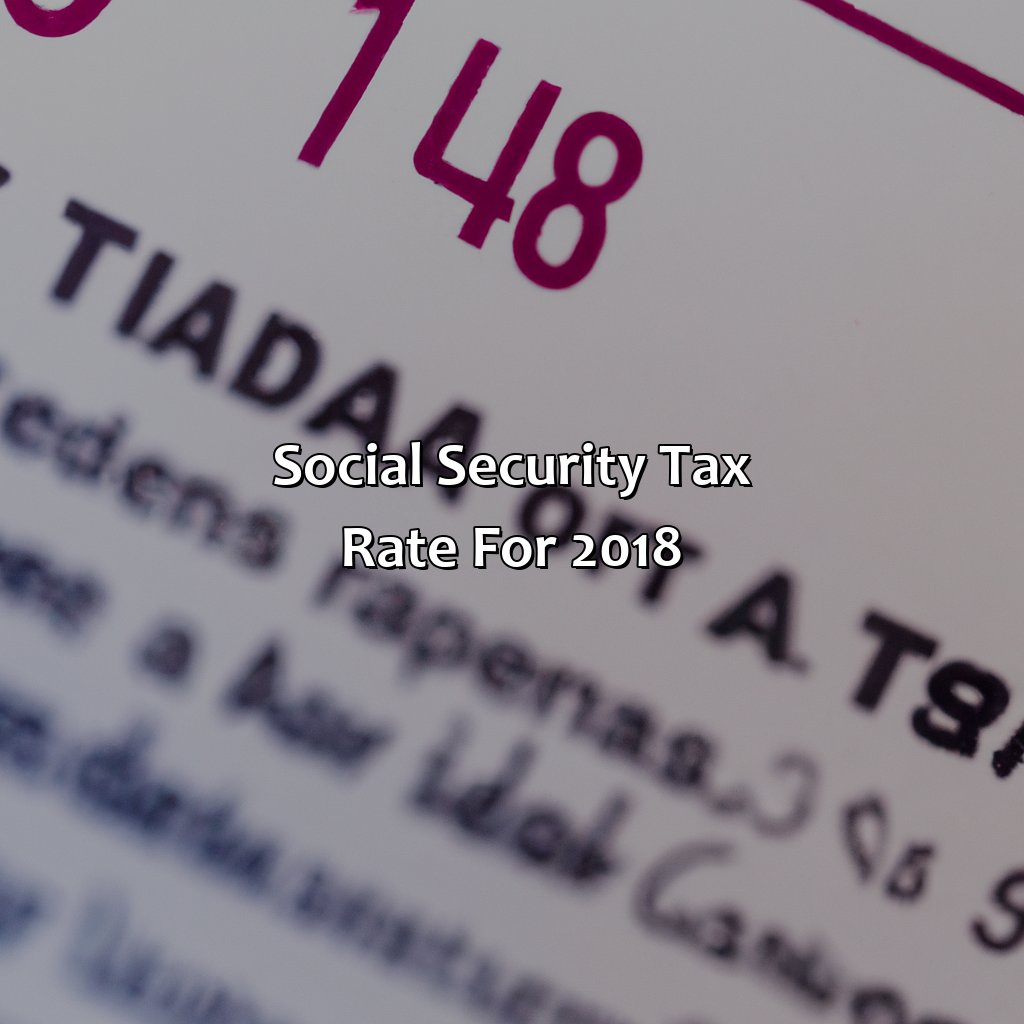
Image credits: retiregenz.com by Adam Washington
Understanding Social Security Tax
Social Security Tax refers to a tax that is deducted from employees’ wages or self-employed individuals’ earnings to finance the Social Security program. This program provides benefits for those who are retired, disabled, or survivors of deceased workers.
The amount of tax deducted is based on a percentage of the employee’s earnings, up to a certain maximum amount. Employers are also required to pay their share of the Social Security Tax for each employee.
The Social Security Tax rate for 2018 is 6.2% for both employers and employees, up to a maximum taxable earning limit of $128,400. Any income above this limit is not subject to the tax. For Medicare taxes, employees and employers each contribute 1.45% of the employee’s earnings, with no cap on taxable income.
It’s important for individuals and businesses to understand how Social Security Tax works and how it affects their finances. To minimize impact, one suggestion is for self-employed individuals to calculate their estimated taxes throughout the year and make quarterly payments if necessary. Another strategy is for employers to provide educational resources about Social Security Tax so that employees can have a better understanding of their contributions towards their own benefits in retirement or disability situations.
Calculating social security tax is like trying to solve a math problem with constantly changing variables, except the answer doesn’t make you feel any smarter.
Social Security Tax Calculation
Calculating social security tax can be challenging, so understanding the process is vital. The calculation involves determining a percentage of income withheld for Social Security and Medicare taxes. The rate changes annually based on income limits set by the IRS.
The Social Security tax rate for 2018 was 6.2%, with a wage base limit of $128,400. Above this threshold, no additional Social Security tax applies. As for Medicare taxes, the rate was 1.45% for all income levels, with no upper limit.
It’s important to note that self-employed individuals are responsible for paying both the employee and employer portions of these taxes and are subject to additional calculations.
By failing to calculate or pay these taxes correctly, individuals may incur penalties and interest charges that can compound over time. It’s essential to keep up-to-date with current rates and obligations to avoid any negative repercussions in the future.
Looks like Social Security is getting a makeover in 2018, but don’t worry, it’s not getting any Botox injections.
Changes in Social Security Tax Rate for 2018
For the year 2018, alterations have been made to the Social Security and Medicare tax rate. It is important to comprehend these modifications whether you are an employee or employer.The changes can impact your finances greatly.
The social security and medicare tax rates have experienced a slight increase from last year for most of the employees and employers.For employees, social security taxes will now be calculated at 6.2% of their wages, which is up from 6.12% in 2017. The employer’s share has also gone up to outweigh this increase. In addition, there have been slight adjustments to the income limit; whereas Medicare taxes would still take hold on all earnings.
Employees subject to payroll taxes should evaluate the possible effect these updates could have on their finances in 2018. Therefore, it would not harm anyone to visit a tax calculator and see what they may require in the coming months.One beneficial way for high earners to protect themselves from inflated payroll levies involves receiving additional payments through a retirement or welfare plan.This lowers taxable income positively impacting their fixed earnings.
It is essential that both employers and employees pay attention to such changes in Social Security Tax Rate as it can make an immense difference in one’s financial position. Incorporating individual monetary planning into your budgeting regime can save large amounts of money even if no immediate changes are being observed. It could bring about happier circumstances financially irrespective of how major or minor certain updates appear.
The only guarantee in life is death, taxes, and the Medicare tax rate for 2018.
Medicare Tax Rate for 2018
Familiarize yourself with Medicare Tax to get a grasp on 2018’s Medicare Tax Rate. Work out how it works, then you can work out your Medicare Tax and change your withholdings accordingly. Keep in mind any changes to the 2018 Medicare Tax Rate.
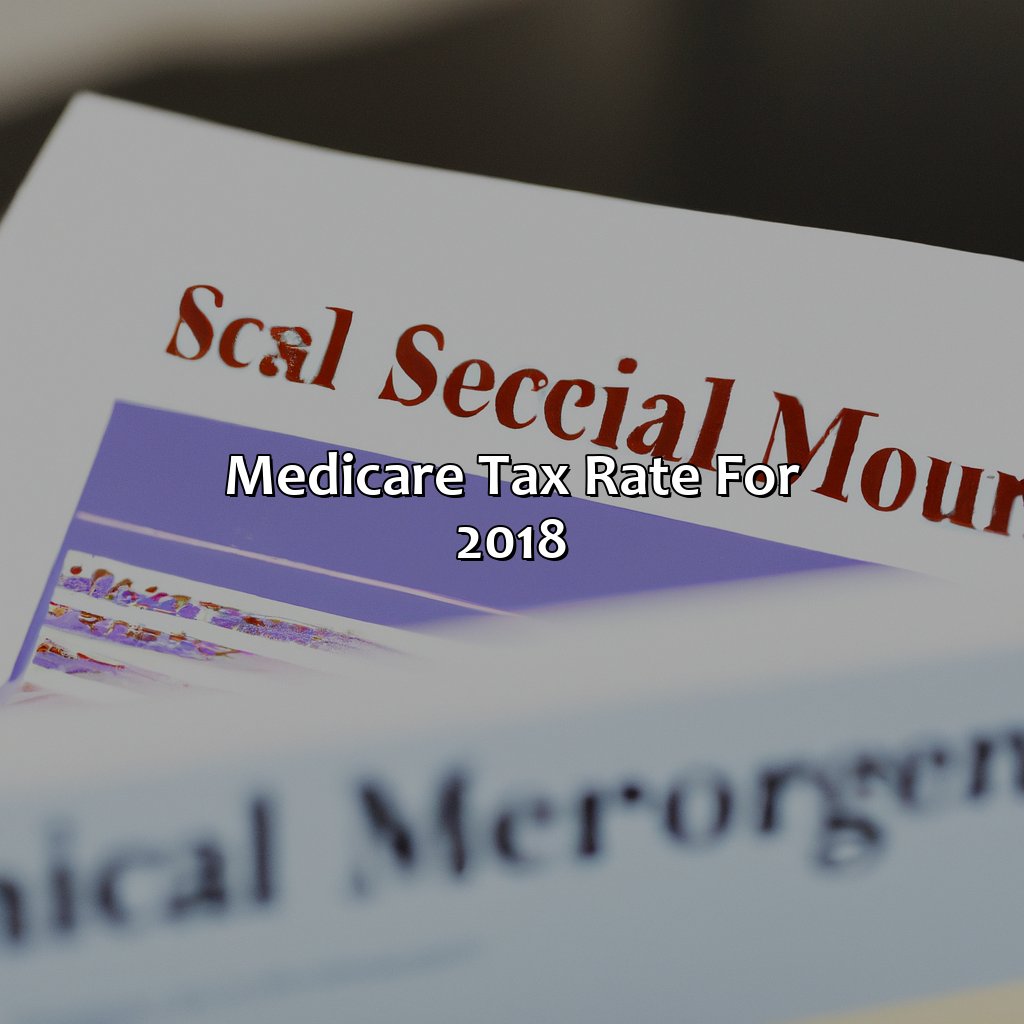
Image credits: retiregenz.com by Adam Jones
Understanding Medicare Tax
When it comes to managing your finances, understanding Medicare tax is essential. This tax helps fund the Federal Insurance Contributions Act, which supports Social Security and Medicare programs. As an employee, you contribute a percentage of your earned income to these programs through payroll taxes.
For the year 2018, the Medicare tax rate is 1.45% for individuals earning up to $200,000 annually or $250,000 for married couples filing jointly. Individuals who earn beyond the threshold will pay an additional 0.9% for a total of 2.35%. Employers also contribute an equal amount towards their employees’ Medicare taxes.
It’s important to note that some individuals may be exempt from paying Medicare taxes, such as those receiving disability benefits or those who are self-employed and earn below a certain threshold.
According to Forbes, in 2019 more than 64 million Americans were beneficiaries of Social Security and about 62 million had coverage under Medicare programs. It’s crucial to understand how Medicare taxes work so that you can accurately budget and prepare for retirement and other healthcare needs.
Are you ready to do some math? Just remember, calculating Medicare tax is like solving a puzzle, except the pieces are your paycheck and the frustration is real.
Medicare Tax Calculation
With regards to determining the Medicare tax rate in 2018, it is calculated based on a specific percentage of an individual’s income. The current rate for Medicare tax is 1.45% of an employee’s taxable income. This tax is also levied on self-employed individuals and amounts to 2.9% of their net earnings from self-employment.
Additionally, there is an additional Medicare tax that applies to those individuals earning over a set threshold amount – $200,000 for single filers and $250,000 for joint filers. This supplementary tax equates to 0.9% and only applies to the excess earnings above these thresholds.
It’s important to note that your employer must withhold the relevant amount from your paycheck should you be employed or they have withheld the incorrect amount you may receive a refund when filing taxes.
Pro Tip: Employers must ensure that they are withholding the correct amount of Medicare taxes from their employees’ paychecks either manually or through payroll software tools. Failure to do so accurately can lead to significant penalties if audited by the IRS.
Looks like Medicare tax rate for 2018 just got a facelift… hope it went better than mine!
Changes in Medicare Tax Rate for 2018
The Medicare tax rate has undergone changes for 2018. Individuals with incomes above a certain threshold will pay a higher rate of 2.35% instead of the standard 1.45%. This increase affects self-employed individuals as well, who must pay both their own share and the employer’s share of the Medicare tax.
Moreover, high-income earners ($200,000 or more for individuals and $250,000 or more for married couples filing jointly) are subjected to an additional tax of 0.9% on the portion of income exceeding these thresholds. The self-employed must also pay this additional tax.
One business owner shared his experience with the changes in Medicare tax rates. He was surprised by how much he owed due to being self-employed and paying both portions of the tax himself. He encouraged others in similar situations to prepare ahead and budget accordingly to avoid any financial surprises come tax season.
Calculating social security and Medicare taxes is like solving a puzzle with pieces that constantly change shape and size.
How to Calculate Social Security and Medicare Taxes
Calculating Social Security & Medicare taxes correctly? Refer to the “How to Calculate Social Security & Medicare Taxes” section in the article “What is Social Security & Medicare Tax Rate for 2018?“. This will make it easy to combine both calculations. Looking for examples? Check out the sub-sections for Social Security & Medicare tax calculation.
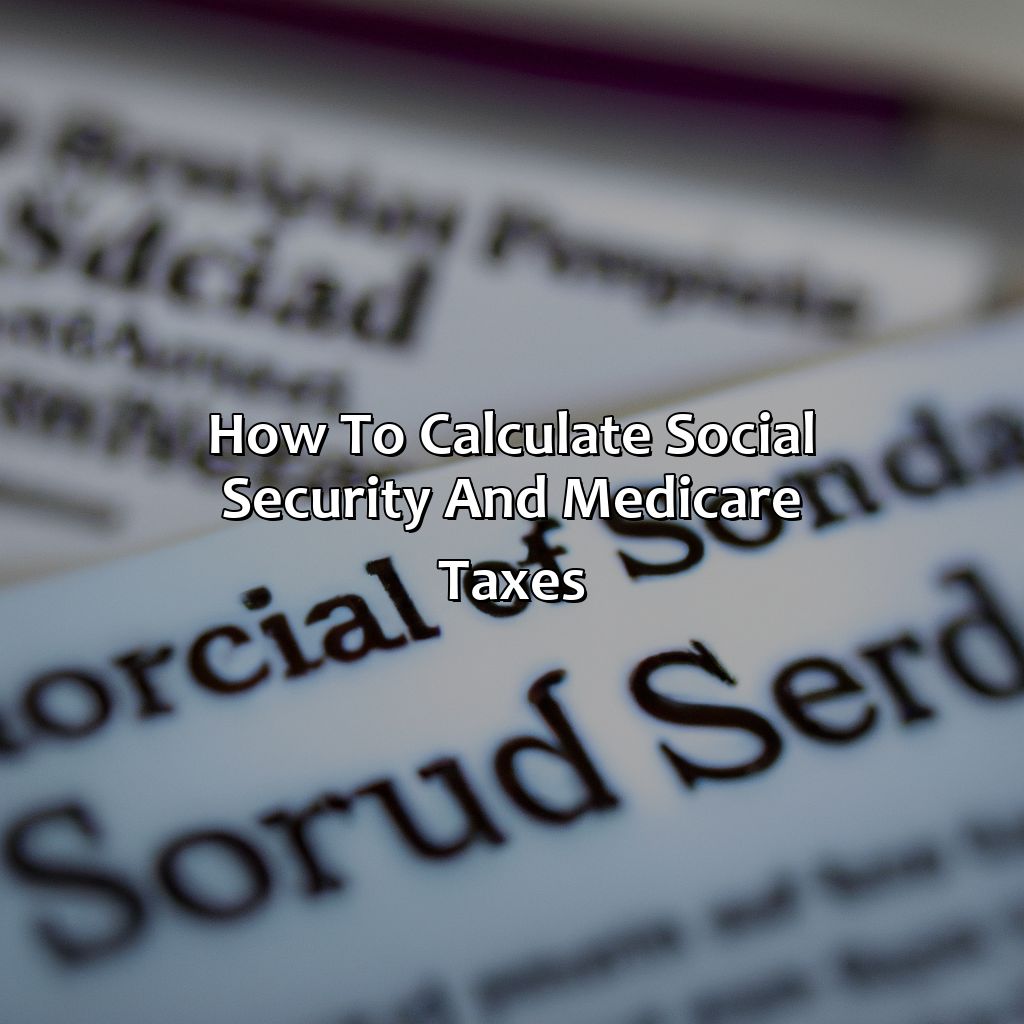
Image credits: retiregenz.com by Adam Jones
Combining Social Security and Medicare Tax Calculation
To calculate the total Social Security and Medicare taxes, you need to combine the individual tax rates for each program. The Social Security tax rate is 6.2%, while the Medicare tax rate is 1.45%. However, if you are self-employed, you need to pay both employer and employee portions of these taxes.
In the following table, we have listed the combined tax rates for Social Security and Medicare based on your employment type and income:
| Employment Type | Income | Social Security Tax Rate | Medicare Tax Rate | Combined Tax Rate |
|---|---|---|---|---|
| Employee or Employer | Any income amount | 6.2% | 1.45% | 7.65% |
| Self-Employed (Entrepreneur) | Up to $128,400 per year* | 12.4%** | 2.9%**** | 15.3% |
*For incomes over $128,400, only the Medicare portion needs to be paid independently.
**Includes both employer and employee portions.
***The Social Security tax rate doubles for self-employed individuals.
****Also includes additional 0.9% for high earners.
It is essential to be familiar with these rates since they can significantly impact your take-home pay.
A notable fact: Self-employed individuals must also file a Schedule SE along with their regular income tax return to report their Social Security and Medicare taxes paid.
Get ready to do some math that’ll make you wish Social Security and Medicare taxes were optional.
Examples of Social Security and Medicare Tax Calculation
Social Security and Medicare Taxes are fundamental for every employee. It is important to know the intricate details of these taxes before calculating them. Therefore, here we will show Social Security and Medicare Tax Calculation examples in a professional manner.
To illustrate the Social Security and Medicare Tax Calculation, we have created an informative table that showcases employee income, Social Security tax rate, maximum taxable earnings, Medicare tax rate, and individual amounts paid by both employer and employee.
| Employee Income | Social Security Tax Rate | Maximum Taxable Earnings | Medicare Tax Rate | Individual Amount Paid by Employee | Individual Amount Paid by Employer |
|---|---|---|---|---|---|
| $30,000 | 6.2% | $128,400 | 1.45% | $435 | $435 |
| $75,000 | 6.2% | $128,400 | 1.45% | $1,725 | $1,725 |
| $150,000 | 6.2% | $128,400 | 1.45% | $3,723 | $3,723 |
These examples showcase how Social Security and Medicare Taxes are calculated based on income brackets.
It’s important to note that for those earning above the maximum taxable earnings cap ($128,400 in 2018), they will not incur any Social Security Tax deductions beyond this point.
A true fact worth mentioning is that as of September 2021, over 65 million people receive Social Security benefits in the United States alone (source: SSA).
Death and taxes may be inevitable, but at least knowing how to calculate social security and medicare taxes can soften the blow for both employers and employees.
What Employers and Employees Need to Know about Social Security and Medicare Taxes
You need to know your responsibilities, penalties and ensure compliance with Social Security and Medicare Taxes. To help you, this article will provide the answers.
For employers: obligations, penalties for late payment or non-compliance.
For employees: duties, penalties for overdue payment or failure to comply. Have a look!
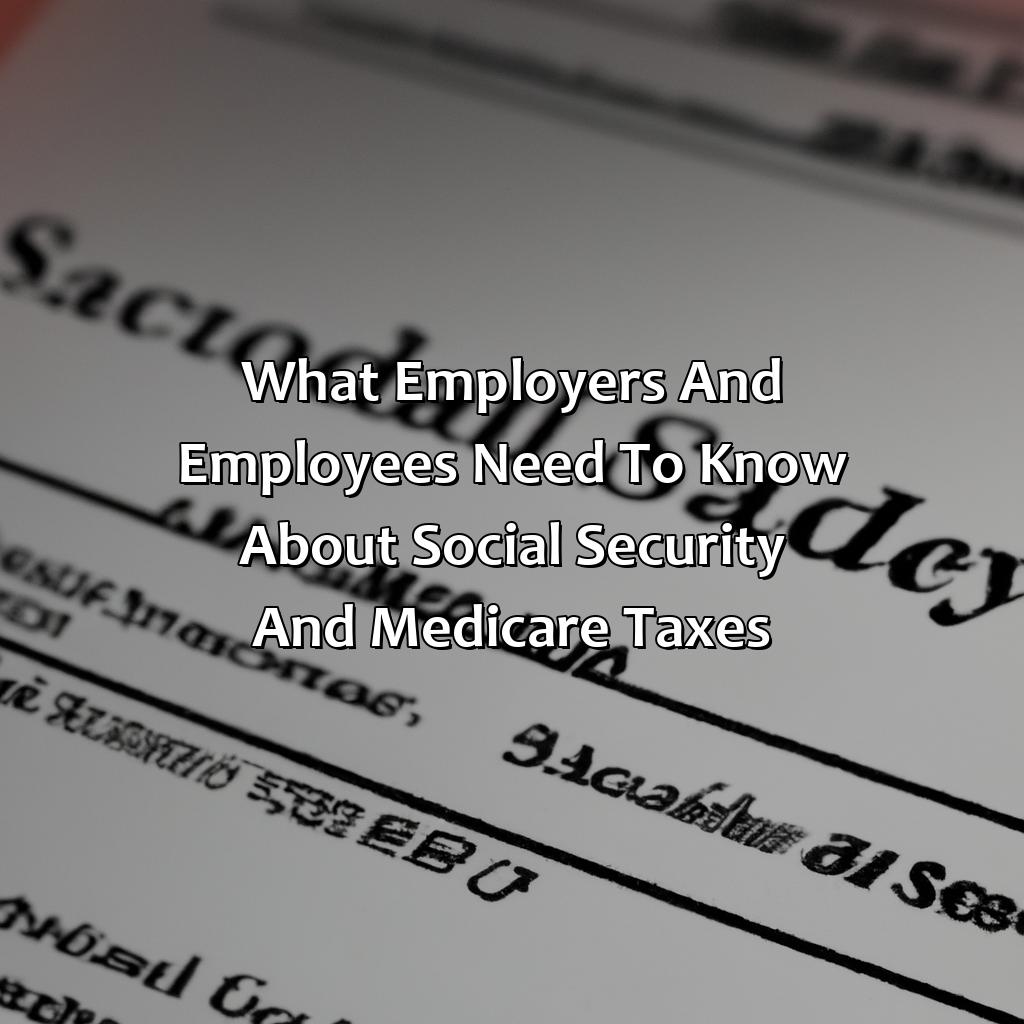
Image credits: retiregenz.com by Yuval Washington
Employer’s Responsibilities
As per government regulations, employers have the legal obligation to withhold social security and Medicare taxes from their employees’ income. In order to fulfill Employer’s Responsibilities, it is essential for employers to calculate and withhold these taxes accurately. This ensures that the employees’ contributions towards government programs are accurately recorded and paid.
Employers need to match the social security and medicare tax contributions made by their employees. These matched contributions go towards funding future benefits for retired or disabled individuals. It is the employer’s responsibility to deposit these taxes in a timely manner through electronic means.
In addition, employers must also file appropriate tax forms with the Social Security Administration (SSA) and provide necessary employee documentation such as W-2 forms. The SSA uses this information to maintain accurate records of individual earnings and contributions towards program benefits.
Pro Tip: Employers who fail to comply with social security and medicare tax regulations may face steep penalties and fines from the government. It is therefore crucial for employers to stay up-to-date with current laws, regulations, and changes related to these taxes.
Looks like clocking in on time isn’t the only responsibility employees have – turns out they’re also on the hook for paying their share of social security and medicare taxes. Time to start hoarding those nickels and dimes!
Employee’s Responsibilities
Employees play an essential role in ensuring the smooth running of social security and medicare tax systems. They are required to pay a portion of their income into these programs, which support retired or disabled individuals. This contribution safeguards the future of employees, too.
Filing correct tax forms and following mandated deadlines is one of the primary responsibilities of every employee. Additionally, they are responsible for keeping accurate records of their earnings, tax payments, and any other relevant information. Meeting these obligations can help them avoid penalties and ensure that they receive necessary benefits.
It’s crucial to keep track of all changes made in social security and medicare taxes, as well as other regulations related to federal income taxes. Regularly reviewing official communication through government portals or accessing resources like Publication 15 (Circular E) or Publication 509 can provide employees with seamless updates on their tax obligations.
The Social Security Administration states that people who have earned at least 40 Social Security credits over their lives will be eligible for benefits when they turn 62 years old. According to Investopedia, each Social Security credit requires $1,470 worth of annual earned income in 2021.
Penalties for Late Payment or Non-Compliance.
Late Payment or Non-Compliance Consequences
Employers and employees need to know the penalties for late payment or non-compliance of their social security and Medicare taxes. These penalties can have significant negative impacts on individuals and businesses alike.
The following table displays the penalties for different durations of delay in paying taxes or not complying with tax regulations, along with the corresponding percentages:
| Penalty Duration | Penalty Percentage |
|---|---|
| Up to 5 Months Late | 5% |
| Between 5 Months to 12 Months Late | 10% |
| More than 12 Months Late | 15% |
It is important to note that these penalties are applied cumulatively and may continue until compliance is achieved. Furthermore, employers who do not withhold and pay employee social security and Medicare taxes can also be subject to additional penalties.
Bottom Line
Neglecting your social security and Medicare tax obligations can result in substantial financial consequences. Not only will you be subjected to monetary fines, but interest will also accrue on outstanding payments. It’s crucial that both employers and employees stay informed about their tax responsibilities to avoid unnecessary legal actions against them.
Five Facts About Social Security and Medicare Tax Rate for 2018:
- ✅ The combined social security tax rate for employees and employers remained at 12.4% for 2018. (Source: IRS)
- ✅ The maximum amount of earnings subject to the social security tax increased to $128,400 for 2018. (Source: IRS)
- ✅ The Medicare tax rate for employees remained at 1.45% for 2018, while the rate for employers remained at 1.45%. (Source: IRS)
- ✅ The additional Medicare tax rate of 0.9% applied to high-earning employees and self-employed individuals remains unchanged for 2018. (Source: IRS)
- ✅ The earnings limit for those under full retirement age increased to $17,040, while the limit for those reaching full retirement age increased to $45,360. (Source: SSA)
FAQs about What Is Social Security And Medicare Tax Rate For 2018?
What is the social security and medicare tax rate for 2018?
The social security tax rate for 2018 is 6.2%, and the Medicare tax rate is 1.45%.
Is there a maximum amount of earnings subject to social security and medicare taxes?
Yes, there is a maximum amount of earnings subject to social security tax. For 2018, that amount is $128,400. There is no maximum amount of earnings subject to the Medicare tax.
Are there any changes to the social security and medicare tax rates for 2018?
Yes, there are changes to the social security and medicare tax rates for 2018. The social security tax rate has increased slightly from last year, while the Medicare tax rate remains the same.
What is the difference between social security tax and Medicare tax?
Social security tax is used to fund the Social Security program, which provides retirement benefits to eligible individuals. Medicare tax is used to fund the Medicare program, which provides healthcare benefits to eligible individuals.
Who is responsible for paying social security and medicare taxes?
Employers are responsible for withholding social security and Medicare taxes from their employees’ paychecks and paying those taxes to the government on behalf of their employees. Self-employed individuals are responsible for paying both the employee and employer portions of these taxes.
What happens if I fail to pay social security and medicare taxes?
If you fail to pay social security and Medicare taxes, you may be subject to penalties and interest charges. Additionally, you may not be eligible to receive social security or Medicare benefits in the future.
